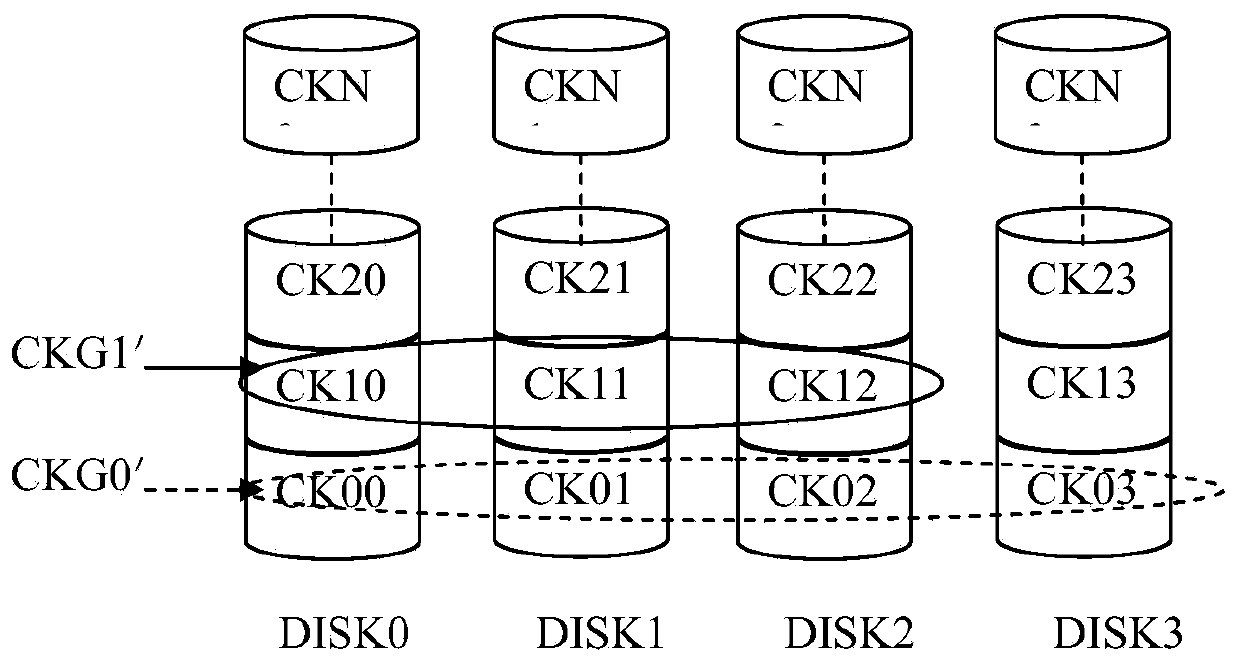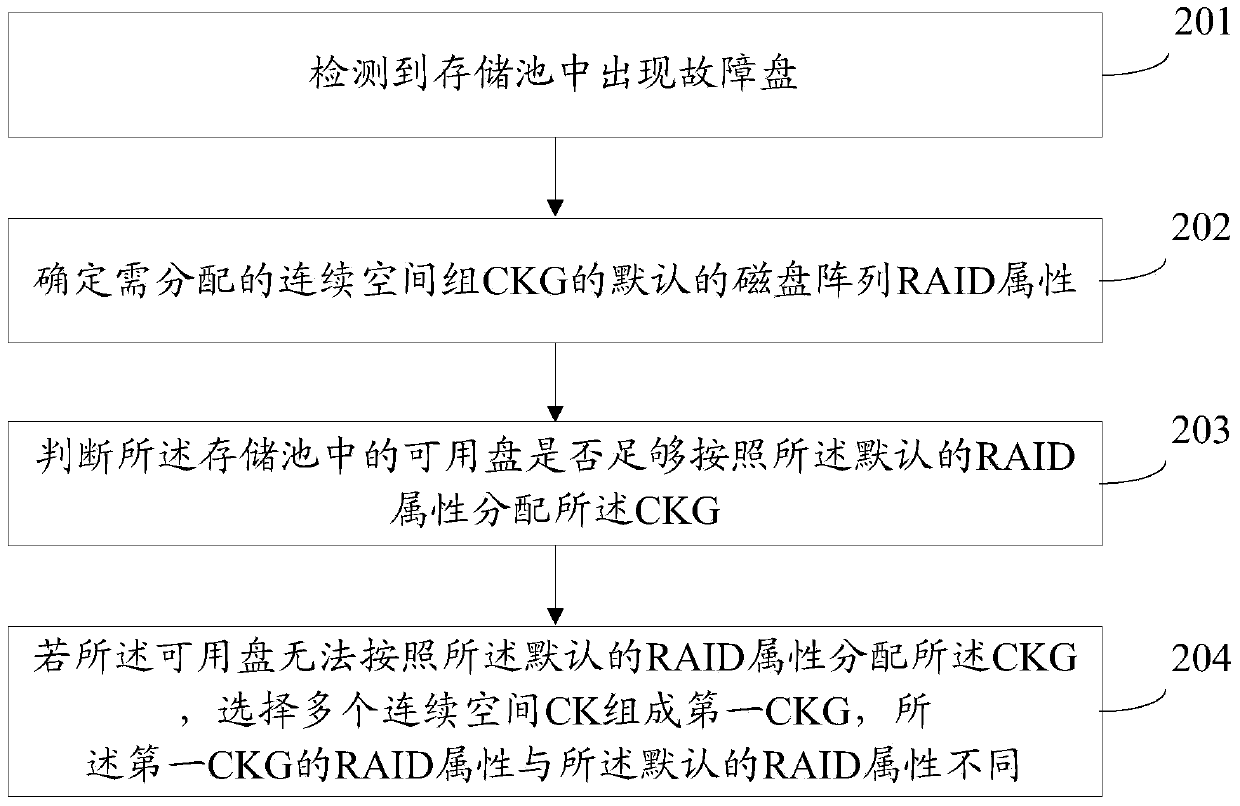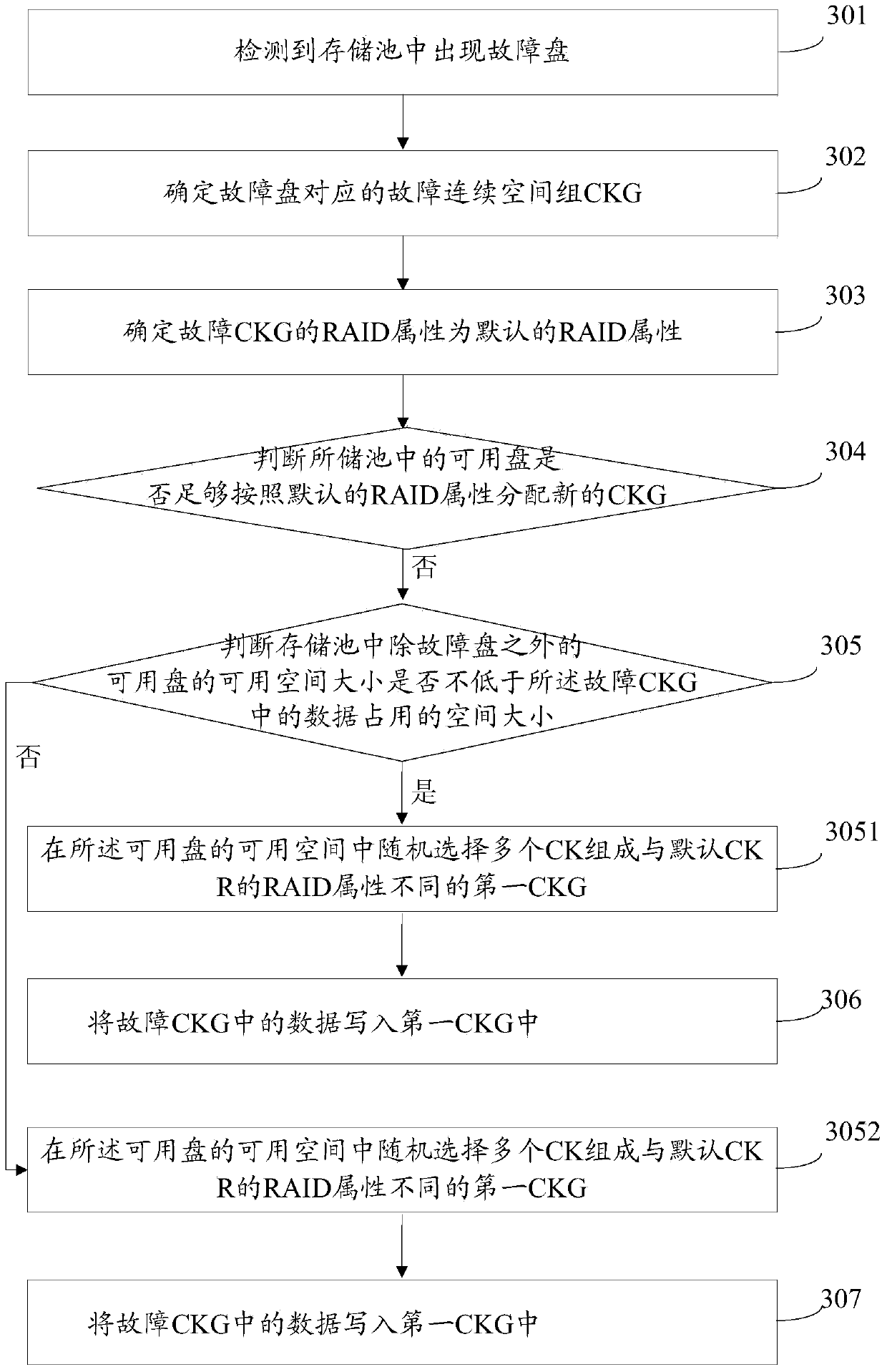Method and device for achieving space distribution in storage pool
A storage pool and internal space technology, applied in the direction of input/output to record carrier, etc., can solve problems such as successful allocation of space for new business data, reduction of data reliability, failure to write data reconstruction business data, etc., to achieve stable performance , The effect of reliability improvement
- Summary
- Abstract
- Description
- Claims
- Application Information
AI Technical Summary
Problems solved by technology
Method used
Image
Examples
Embodiment 1
[0045] This embodiment provides a method for realizing space allocation in a storage pool, please refer to figure 2 , the method flow includes:
[0046] 201. A faulty disk in the storage pool is detected;
[0047] 202. Determine the default disk array RAID attribute of the continuous space group CKG to be allocated;
[0048] 203. Determine whether the available disks in the storage pool are sufficient to allocate the CKG according to the default RAID attribute;
[0049] 204. If the available disk cannot allocate the CKG according to the default RAID attribute, select multiple contiguous spaces CK from the available disk to form a first CKG, and the RAID attribute of the first CKG is the same as the default RAID attribute. The RAID attributes are different.
[0050] Further, allocating the first CKG different from the default RAID attribute in the available disk includes:
[0051] Select a plurality of continuous spaces in the available disk to form the first CKG.
[0052...
Embodiment 2
[0073] This embodiment provides a method for realizing space allocation in a storage pool, please refer to image 3 , the method flow includes:
[0074] 301. It is detected that a faulty disk occurs in a storage pool.
[0075] 302. Determine a faulty continuous space group CKG corresponding to the faulty disk.
[0076] 303. Determine that the RAID attribute of the faulty CKG is the default RAID attribute.
[0077] 304. Determine whether the available disks in the storage pool are sufficient to allocate new CKGs according to the default RAID attributes.
[0078] 305. If the available disk cannot be assigned a new CKG according to the default RAID attribute, then determine whether the available space of the available disk in the storage pool other than the faulty disk is not lower than the space occupied by the data in the faulty CKG; if If yes, go to step 2041, otherwise go to step 2042.
[0079] 3051. Randomly select multiple CKs in the available space of the available dis...
Embodiment 3
[0097] This embodiment provides a method for implementing space allocation in a storage pool. see Image 6 , the method flow includes:
[0098] 601. Receive new service data.
[0099] 602. It is detected that a faulty disk occurs in the storage pool.
[0100] 603. Determine that the RAID attribute of the CKG allocated by the new service data request is the default RAID attribute.
[0101] 604. Determine whether the available disks in the storage pool are sufficient to allocate a new CKG according to the default RAID attribute.
[0102] 605. If the available disk cannot allocate a new CKG according to the default RAID attribute, allocate a first CKG in the available disk that is different from the default RAID attribute.
[0103] 606. Write new service data into the first CKG.
[0104] Specifically, when selecting a CK, it may be required that the hard disks of each selected CK are different, that is, each available disk only contributes one CK, so the problem of increased...
PUM
 Login to View More
Login to View More Abstract
Description
Claims
Application Information
 Login to View More
Login to View More - R&D
- Intellectual Property
- Life Sciences
- Materials
- Tech Scout
- Unparalleled Data Quality
- Higher Quality Content
- 60% Fewer Hallucinations
Browse by: Latest US Patents, China's latest patents, Technical Efficacy Thesaurus, Application Domain, Technology Topic, Popular Technical Reports.
© 2025 PatSnap. All rights reserved.Legal|Privacy policy|Modern Slavery Act Transparency Statement|Sitemap|About US| Contact US: help@patsnap.com



